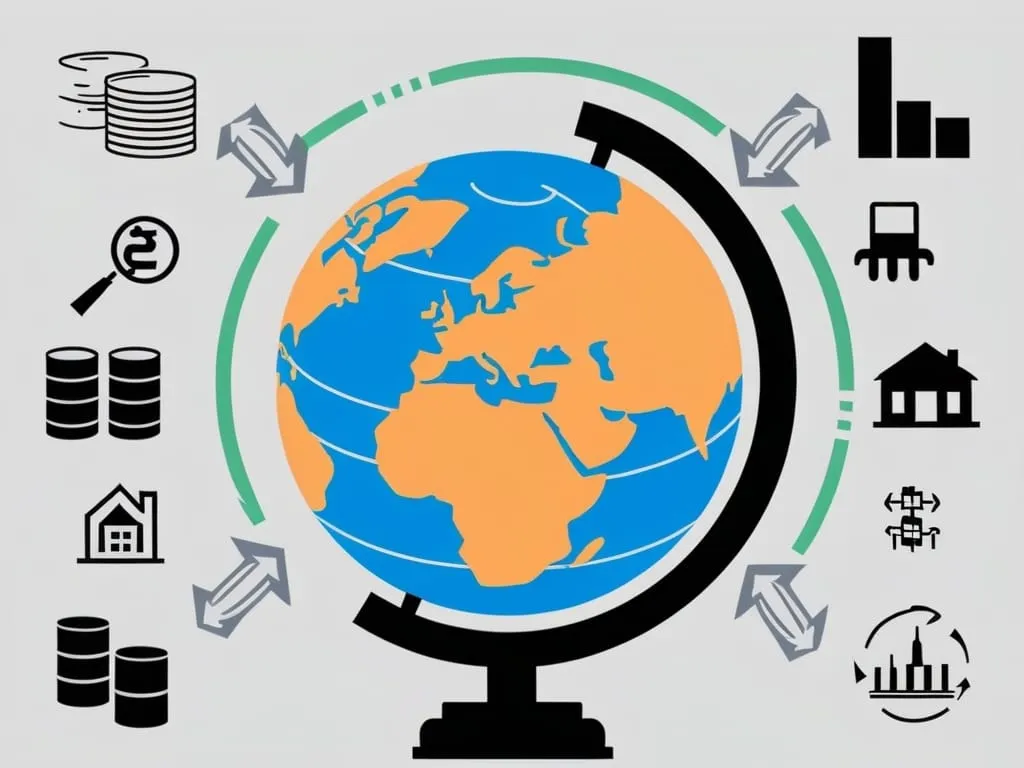In the bustling streets of a modern city, a college student named Rahul is on a mission to transform his financial future, one small step at a time. With a limited income and no prior knowledge of the financial markets, Rahul discovers the power of micro-investing, a concept that is revolutionizing the way people save and invest.
Rahul's journey begins with a simple app that he downloads on his phone. This app has a feature that rounds up his daily purchases to the nearest whole number and invests the spare change. For instance, if Rahul buys a coffee for ₹25.50, the app will round it up to ₹26 and invest the 50 paise difference. This might seem like a trivial amount, but over time, these small contributions add up.
The mechanism behind this is straightforward yet powerful. Micro-investing platforms allow users to invest tiny sums of money, often as little as a few rupees, into various financial instruments such as stocks, bonds, or exchange-traded funds (ETFs). Unlike traditional investing, which typically requires significant capital, micro-investing breaks down these barriers, making it accessible to everyone.
One of the key features of micro-investing is fractional ownership. This means Rahul can buy a fraction of a share rather than the entire share. For example, if a single share of a high-value stock costs ₹1,000, Rahul can invest ₹100 and own 10% of that share. This model lowers the entry threshold, making high-value assets accessible to small-scale investors like Rahul.
The process is automated, which simplifies the investment process significantly. Rahul sets up the app to round up his purchases and invest the spare change regularly. He can also set up recurring transfers from his bank account to his investment fund. This automation encourages consistent investing habits, even for those with limited financial knowledge.
Micro-investing is not just about the money; it also has psychological benefits. For young adults like Rahul, the idea of investing can be daunting. However, micro-investing makes it less intimidating by allowing them to start with small, manageable amounts. This approach helps build confidence and develops a lifelong saving habit without making thrift a compulsion.
Rahul soon realizes that these tiny contributions are not just spare change but are actually building blocks of his financial future. The power of compound interest is at play here. Compound interest is the interest on a loan or deposit calculated based on both the initial principal and the accumulated interest from previous periods. Over time, this can lead to significant growth. For instance, if Rahul invests ₹100 every month with a 4% annual return, he will have accumulated a substantial amount after several years.
Micro-investing platforms are democratizing finance in a way that was previously unimaginable. They offer diversified portfolios, which help mitigate risk by spreading investments across various asset classes and industries. This diversification is particularly beneficial for novice investors who may not have the expertise to build a balanced portfolio on their own.
Rahul's experience is not unique; many young adults are turning to micro-investing as a way to start their investment journey. The rise of micro-investing can be attributed to the convenience of mobile applications, the low barriers to entry, and the ability to invest in fractional shares. A recent survey found that millennials are more likely to invest through their mobile devices, indicating a growing demand for mobile-first investment solutions.
For companies, micro-investing platforms offer several benefits. They can help companies reach a wider customer base, including younger and less affluent customers who may not have considered investing in the stock market before. These platforms also generate income from fees charged on transactions, management fees, or premium subscriptions, providing a new revenue stream.
Moreover, micro-investing platforms can be a powerful tool for brand building. By designing a platform that aligns with business goals and target audiences, companies can create a brand image that resonates with customers and builds trust. For example, some platforms focus on sustainable investing or supporting socially responsible companies, attracting customers who share these values.
As Rahul continues his journey, he learns about the importance of understanding market dynamics. Micro-investing platforms often provide educational resources to help users make informed decisions. Rahul watches free educational videos and reads articles on the app to strengthen his financial knowledge. This education is crucial in helping him navigate the financial markets and make smart investment choices.
However, it's important to consider the costs associated with micro-investing. While the fees are generally lower than those of traditional investment platforms, they can still add up over time. Rahul needs to weigh the benefits against the costs. For instance, if he invests ₹10 monthly on a micro-investing platform with a ₹1 monthly subscription fee, he needs to ensure that the returns justify the expenses.
Despite these considerations, micro-investing remains a powerful tool for financial empowerment. It allows individuals to participate in diverse investment portfolios with minimal capital, fostering a culture of financial responsibility and long-term wealth accumulation. Rahul's small investments are not just about accumulating wealth; they are about building healthy financial habits and securing his future.
In the Indian context, micro-investing is particularly relevant. With a large population of young adults looking to secure their financial futures, these platforms offer a viable solution. The simplicity and user-friendliness of these apps make them ideal for those who are new to investing. Moreover, the automated nature of these platforms ensures that investments are consistent and regular, even for those with irregular incomes.
As Rahul looks back on his journey, he realizes that micro-investing has been more than just a way to save money; it has been a journey of financial education and empowerment. He has learned to appreciate the value of small, consistent investments and the power of compound interest. Through his experiences, Rahul has gained insights into building healthy financial habits, understanding market dynamics, and the long-term impact of consistent, small-scale investing.
In conclusion, micro-investing is a transformative force in the financial landscape. It is making finance accessible to everyone, regardless of their economic background. For young adults like Rahul, it offers a gateway to the investment world, teaching them the importance of personal finance, saving, and budgeting. As technology continues to evolve, micro-investing will play a crucial role in empowering individuals to take control of their financial futures, one small investment at a time.






